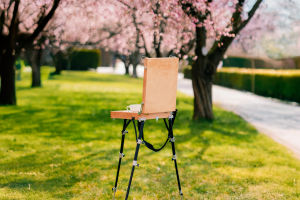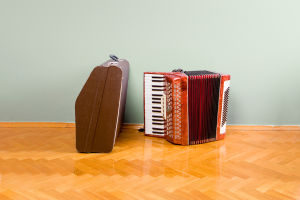Printmaking, an age-old technique with a rich history, has seen dramatic transformations in recent decades. Traditional methods, like woodcut, etching, and lithography, have long been the foundation of the printmaking world.
However, with the rise of digital technology, printmaking has entered a new era, where digital tools are reshaping the way artists create and distribute their work. In this article, we'll explore how digital technology has influenced traditional print art and what this means for both artists and audiences.
From Analog to Digital: The Shift
Traditionally, printmakers used manual methods, relying on physical materials and direct interaction with the medium. This could involve carving a woodblock for relief prints or etching a metal plate for intaglio. These hands-on processes required immense skill and patience. With the introduction of digital tools like graphic design software and digital printers, artists have gained access to an entirely new realm of possibilities.
Digital technology allows us, as artists, to create prints with more precision and ease than before. Software such as Adobe Illustrator or CorelDRAW offers us the ability to design intricate images and compositions on a computer, which can then be transferred directly to a digital printing press. This process eliminates some of the physical labor traditionally associated with printmaking, allowing for more experimentation and creativity in less time.
The Advantages of Digital Printmaking
We've seen numerous advantages emerge from the digital printmaking revolution. One of the most significant is the ability to easily replicate prints without losing quality. Unlike traditional methods, where each print was a unique creation, digital prints can be reproduced with precision and consistency, allowing for a larger distribution of an artwork. This has opened up opportunities for artists to reach a global audience, creating prints that are accessible to a wider market.
Another advantage is the ability to manipulate images digitally. Artists can now easily modify colors, adjust composition, or add new elements to their prints without starting from scratch. This flexibility enables us to create highly personalized and detailed works that would have been challenging, if not impossible, with traditional methods. Moreover, digital technology allows for better color accuracy and sharper images, which enhances the overall quality of the print.
Maintaining Traditional Techniques in a Digital World
While digital tools offer numerous benefits, they haven't completely replaced the traditional methods. Many contemporary printmakers choose to combine digital technology with traditional techniques, creating hybrid artworks that showcase the best of both worlds. For example, an artist might create a digital design and then print it onto a hand-carved woodblock, merging the precision of digital art with the tactile, handmade nature of traditional printmaking.
This fusion of old and new methods allows for a broader range of creative expression. We are not limited to a single medium, but can instead blend digital and analog techniques to explore new dimensions of printmaking. In this way, digital technology enhances rather than diminishes the value of traditional skills, offering a space for experimentation and innovation while respecting the history of the craft.
Challenges and Considerations for Artists
As with any technological advancement, there are challenges to overcome. One concern is the perception of digital prints versus traditional prints. Some critics argue that digital prints lack the authenticity and uniqueness of hand-crafted works. For many traditional printmakers, the physicality and labor involved in creating each print are part of the art's value. Digital prints, being easy to replicate, may sometimes be viewed as less special or valuable in comparison.
Furthermore, there's the question of artistic intention. The process of creating digital art is, by nature, different from that of traditional printmaking. For example, creating a lithograph requires a physical relationship with the material, while a digital print is made by manipulating pixels. Some artists may struggle with this shift in process, feeling that the digital medium lacks the personal touch and craftsmanship of traditional techniques.
The Future of Digital Printmaking
Looking ahead, we can expect digital printmaking to continue evolving. As technology improves, we'll likely see even more sophisticated printing methods that allow for more texture, depth, and interactivity in digital prints. Advances in 3D printing and augmented reality may also influence the future of printmaking, adding layers of complexity and interactivity to traditional prints.
Moreover, the rise of online platforms for selling and showcasing digital prints has made it easier for artists to sell their work globally, reaching an audience that was previously inaccessible. As digital printmaking becomes more widely accepted, we can anticipate that the boundaries between traditional and digital art will continue to blur, creating new possibilities for artists and audiences alike.
Conclusion: Embracing Change in Printmaking
Digital technology has undeniably transformed the world of printmaking, offering artists new ways to create, distribute, and experiment with their work. While traditional methods remain valuable for their tactile and historical qualities, digital tools have brought us into a new age of possibilities. As artists, we can embrace this shift, combining the best of both worlds to create innovative and meaningful works that speak to the present moment while honoring the past.
We hope this article has inspired you to explore the world of digital printmaking or reconsider how digital tools could enhance your own artistic practice. Whether you're an artist, collector, or simply an art enthusiast, the future of printmaking is exciting and filled with opportunities for creative exploration. What do you think—will digital prints completely replace traditional methods, or will they coexist and enrich one another?


